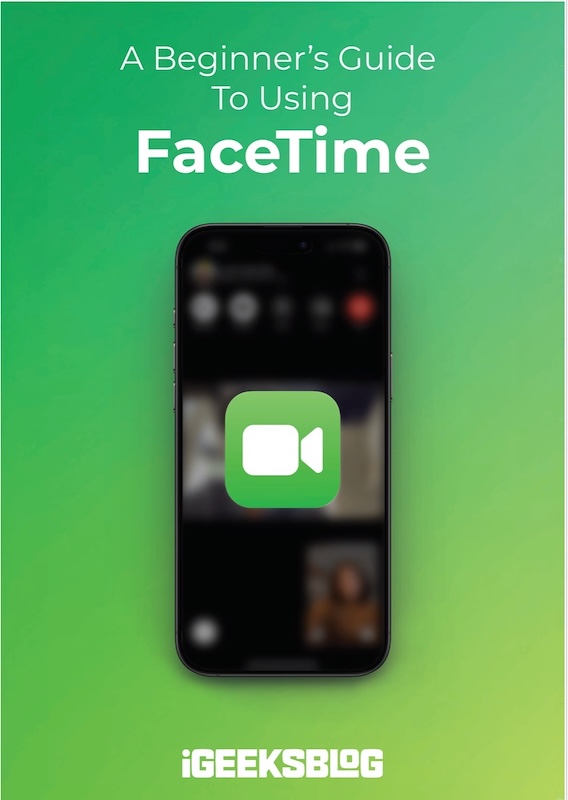
FaceTime Like a Pro
Get our exclusive Ultimate FaceTime Guide 📚 — absolutely FREE when you sign up for our newsletter below.

FaceTime Like a Pro
Get our exclusive Ultimate FaceTime Guide 📚 — absolutely FREE when you sign up for our newsletter below.
Apple Watch Series 11 brings Hypertension alerts, Sleep Score, 5G, and longer battery life. But is it worth upgrading from Series 10?
Apple’s “Awe Dropping” event introduced the Apple Watch Series 11, promising breakthrough health tracking, better durability, and even faster connectivity. But if you already own the Apple Watch Series 10 or are eyeing a discounted one, the big question is: is the Series 11 worth the extra money? Let’s find out.
| Feature | Apple Watch Series 11 | Apple Watch Series 10 |
|---|---|---|
| Design | Thinnest ever; ceramic-coated Ion-X glass (2× scratch-resistant) | Slimmer than Series 9, standard Ion-X glass |
| Display | Bright OLED, tougher front glass | Bright wide-angle OLED |
| Processor | S10 chip | S10 chip |
| Battery Life | Up to 24 hours; fast charge: 15 min → ~8 hours | Up to 18 hours; fast charge: 30 min → ~80 % |
| Connectivity | 5G (Cellular models) | LTE (Cellular models) |
| Health Features | Hypertension alerts, Sleep Score, ECG, Blood Oxygen, HR monitoring | Sleep apnea detection, ECG, Blood Oxygen, HR |
| Software | watchOS 26 | watchOS 26 |
| Sustainability | 100 % recycled aluminum/titanium; recycled cobalt battery | Recycled materials (less extensive than Series 11) |
| Starting Price | $399 (GPS), $499 (Cellular) | $399 (GPS), $499 (Cellular) |

The Series 10 made headlines last year as Apple’s thinnest, lightest watch ever. But the Series 11 takes it a step further, becoming the sleekest Apple Watch to date.
The big upgrade? Ceramic-coated Ion-X glass, which Apple claims is twice as scratch-resistant. For anyone who frequently bumps their wrist against doors, desks, or gym equipment, this added protection could be a game-changer.
Both watches feature Apple’s stunning bright OLED display that’s easy to view outdoors. While the Series 10 already expanded the screen, the Series 11 reinforces it with tougher front glass perfect for longevity, even if the visuals look similar.

Apple’s health tracking is a major selling point, and while both watches cover essentials like ECG, blood oxygen, and heart rate, the Series 11 introduces two standout features:
If health insights drive your upgrade decisions, Series 11 delivers.
The Series 10 offered up to 18 hours, but the Series 11 stretches this to 24 hours. That’s a big deal if you use your watch heavily for workouts or sleep tracking.
Fast charging also improves: a 15-minute charge delivers ~8 hours of use, making it easier to top up before a workout or sleep session.
For the first time, the Apple Watch supports 5G (on cellular models). This means faster data speeds and more reliable connections in weak signal areas, something the LTE-only Series 10 can’t match.
Both run watchOS 26, which brings the Liquid Glass design with layered widgets and refreshed UI elements. Series 11 doesn’t get exclusive features here, but it does run things a little smoother thanks to optimizations.
Apple doubles down on eco-friendly design with the Series 11, built from 100% recycled aluminum or titanium, and even a recycled cobalt battery. The Series 10 used recycled materials too, but not as extensively.
The Apple Watch Series 11 isn’t a radical redesign but represents a meaningful step forward.
Stick with Series 10 if:
Upgrade to Series 11 if:
Bottom line: For health enthusiasts and future-proofing, the Series 11 is worth it. For everyone else, the Series 10 is still a fantastic buy.
In case you missed